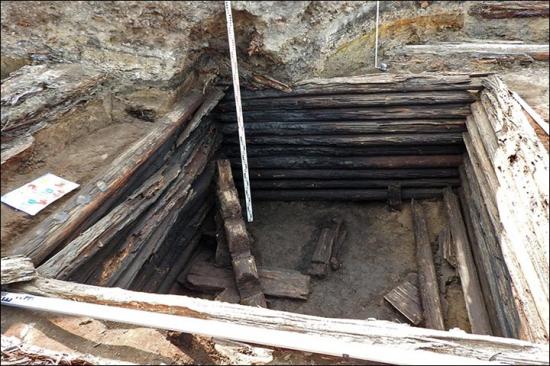Charred turnip dinner throws new light on conquest of Siberia
Source - http://siberiantimes.com/science/casestudy/features/f0286-charred-turnip-dinner-from-400-years-ago-throws-new-light-on-conquest-of-siberia/
Intriguing finds from archeological excavations in old garrison town of Tara, a key historic staging post to the east.
 'It looks like a huge puzzle of Siberian city life at this time, which we have just started to gather.' Picture: Maria Chernaya
'It looks like a huge puzzle of Siberian city life at this time, which we have just started to gather.' Picture: Maria Chernaya
The turnip, pictured here, was ready for cooking in a large clay pot when the log house caught fire and was quickly destroyed in flames, say archeologists.
Yet the meal was preserved, and nearby in an excavation of historical importance concerning Siberia's development were found pieces of Venetian glassware, along with the remains of women's knitted stockings and footwear.
Tara - in Omsk region - is significant because it was one of the earliest settlements by Russians as they went eastward, founded in 1594 by Prince Andrey Eletsky.

 Big clay pot ('korchaga'), rounded with red, was standing next to the stove. Pieces of turnip. Pictures: Sergey Tataurov
Big clay pot ('korchaga'), rounded with red, was standing next to the stove. Pieces of turnip. Pictures: Sergey Tataurov
The remains of the turnip dinner come from around this time, and the archeological explorations now underway represent the chance to understand the early pioneers, among them political and also criminal exiles, who began the modern development of Siberia.
Professor Maria Chernaya said: 'One of the interesting finds of this season was indeed the turnip. We were excavating a big log house (izba), which burned down in the past and was left exactly as it was.

 'The thickness of the cultural layer is 3 - 4 metres and it is very rich in finds (which) belong to the 16th to 18th centuries.' Pictures: Maria Chernaya
'The thickness of the cultural layer is 3 - 4 metres and it is very rich in finds (which) belong to the 16th to 18th centuries.' Pictures: Maria Chernaya
'The fire was quite big. Near the stove was a big clay pot, called 'korchaga' in Russian. It was used not for cooking, but for storing food. So there was a turnip, and it was standing near the stove. When the fire began, the temperature was so high that the turnip 'baked' inside this pot.
'When we started to excavate the pot, we saw that something was inside. Sadly the picture doesn't portray this. The vegetable was very fragile, but we saw that it had kept the shape of a turnip.
'Of course when we tried to take it from the pot, it lost its shape. Yet we managed to do the analysis and confirmed it was a turnip. But also we found out that the turnip had been kept from autumn, for several months, so it was part of the winter stocks. This means the house burned down in winter or spring.'
It seems surprising that so much can be learned from a charred turnip around 400 years old.
PART.2